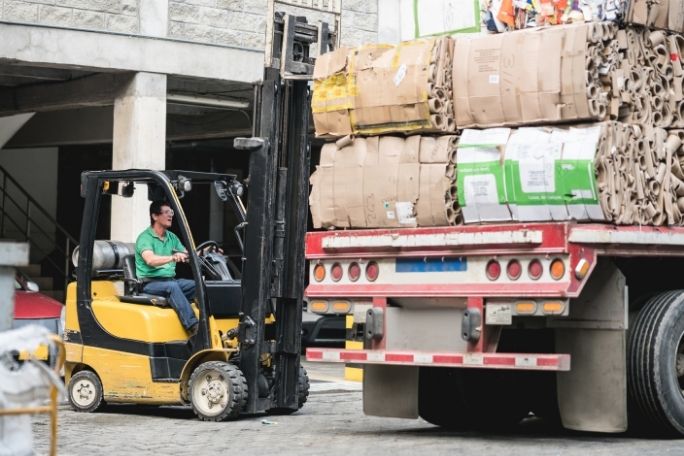Lesson summary
Students will obtain an understanding of large numbers by relating figures concerning paper usage in Australia to football fields. They will use area formulas and convert between units to solve problems. Students will also compare how much paper is used, recycled and thrown away as rubbish per year in Australia.
Learning intentions:
Students will...
- be able to use area and conversion of values to understand large values
- understand the amount of paper being used and recycled in Australia
Success criteria:
Students can...
- sort collected waste into the different recyclable groups
- use real dimensions of a waste-paper bin to apply volume formulas
- use assumptions and calculations to make projections about recyclable material entering landfill
Lesson guides and printables
Lesson details
Curriculum mapping
Australian curriculum content descriptions:
Year 7 Maths: Standard area
- Establish the formulas for areas of rectangles, triangles and parallelograms, and use these in problem-solving (ACMMG159).
Year 8 Maths: Standard area but provide less scaffolding on tasks
- Choose appropriate units of measurement for area and volume and convert from one unit to another (ACMMG195).
General capabilities: Numeracy, Critical and creative thinking, Ethical understanding.
Cross-curriculum priority: Sustainability OI.8.
Relevant parts of Year 7 Mathematics achievement standards: Students use formulas for the area and perimeter of rectangles and calculate volumes of rectangular prisms.
Relevant parts of Year 8 Mathematics achievement standards: Students convert between units of measurement for area and volume.
Unit of work: Visy Education – Secondary Mathematics.
Time required: 80 mins.
Level of teacher scaffolding: Medium – the teacher will need to facilitate an investigation, class discussion and provide further information to students during the course of the lesson.
Resources required
- Student Worksheets (one copy per student)
- Device capable of projecting images and quotes
- A ream of A4 paper to map out the area of a designated space (e.g. classroom). Try to use paper from your staffroom recycling bin to avoid wastage
- Measuring tapes to measure the dimensions of the designated space
- Thumb tacks or small weights to keep the paper from moving or blowing away
- Scales (if you choose to weigh paper)
- Rulers (if you choose to measure paper)
Skills
This lesson is designed to build students’ competencies in the following skills:
- Critical thinking
- Global citizenship
- Problem solving
- Social skills
Additional info
This lesson has been developed in partnership with Visy. For over 70 years Visy has been committed to finding sustainable solutions for Australia and New Zealand’s recyclables and helping to reduce local landfills. Visy collects, receives and sorts paper, cardboard, glass, plastics, steel and aluminium from households, businesses and schools with the purpose of reusing these products in the re-manufacture of new packaging products.


Welcome back!
Don't have an account yet?
Log in with:
By signing up to Cool.org you consent and agree to Cool's privacy policy to
store, manage and process your personal information. To read more, please see
our privacy policy here(Opens in new tab).
Create your free Cool.org account.
Many of our resources are free, with an option to upgrade to Cool+ for premium content.
Already have an account?
Sign up with:
By signing up to Cool.org you consent and agree to Cool's privacy policy to
store, manage and process your personal information. To read more, please see
our privacy policy here(Opens in new tab).